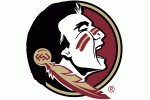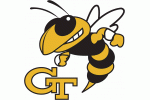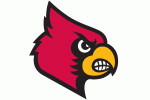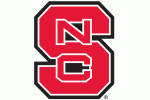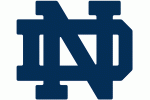It’s long past time for arguments about Roy Williams’ place among the coaching elite to end.

Former Tar Heel football coach Dick Crum, a man otherwise seemingly devoid of warmth or humor, is reputed to have once said that there are two things every man in America thinks he knows how to do better than everyone else: grill a steak and coach football.
He should meet Roy Williams.
It is 2017. Roy Williams has a coaching record of 814-216 (79%). He’s won two titles and is headed to his second straight Final Four. The rest of the ACC combined has as many regular season titles as Roy has in his time at Carolina. He’s been to the Final Four nine times in the last 15 years.
Yet, somehow, some way, an endless, inane conversation continues every time he loses a game, the gist of which is that whether or not he’s a great basketball coach is somehow still open to debate. You can find both people who declare that he can do nothing but recruit, and people who say he’s lost his recruiting touch. Some of this you can dismiss as rank jealousy from others in the coaching ranks he’s outperformed, but unfortunately this phenomenon exists among the UNC fanbase, too. There’s a guy somewhere who actually tracked down Roy’s personal phone number to berate him for not landing Brandon Ingram. That happened in real life.
Roy saved the voicemail and proceeded to the national title game while Ingram (and presumably the imbecile caller) watched from home.
No coach in the history of college basketball has gotten less credit for more substance than Roy Williams. It shouldn’t, but apparently this stuff bugs him.
Which brings us to the last two possessions of the Kentucky game. That sequence should be a conversation-ender should you ever again find yourself with the misfortune of having to tolerate a Roy-bashing session (and trust me, even if the Tar Heels win the title next week, you will). What you see is the product of thought, depth, precision and repetition that gelled the moment it mattered most. Let’s take it frame by frame.
/cdn0.vox-cdn.com/uploads/chorus_asset/file/8242335/Jackson_Getting_back_on_D.png)
Justin Jackson missed the front end of a 1-and-1 that could have iced the game. While your heart was sinking and expecting the worst, Jackson was already executing what he had been taught to do and repeated many times in practice: getting to his defensive assignment, which in this case is to get downcourt to help Joel Berry deal with Malik Monk. As you see above, he’s looking for Monk and headed his way before the rebounder has even hit the floor.
/cdn0.vox-cdn.com/uploads/chorus_asset/file/8242337/Jackson_catching_Monk.png)
Here Jackson is almost out of frame, ignoring all other Kentucky players to get to Monk. As will soon become clear, the Tar Heels have decided (somehow, without a timeout – more on that later) that they are going to do everything within their power to keep Monk from beating them. That’s because of the situation: Kentucky needs 3 and Monk is by far their best shooter.
/cdn0.vox-cdn.com/uploads/chorus_asset/file/8242339/Double_Screen.png)
The fact that he has the best shooter in the country on his roster is not lost on John Calipari, who, as it happens, is also a good coach. Kentucky runs a set play: Monk is going to curl left and get a double screen to free him for a 3-point shot at the top of the key. Isaiah Briscoe will try to rub Jackson off of Monk while handing the ball off to him, and forward Derek Willis awaits at the top as insurance if Jackson gets through.
A less snarky person would not mention that they were able to do this without benefit of a timeout, but I am not that person. Kentucky knows what it wants to do and executes it well.
/cdn0.vox-cdn.com/uploads/chorus_asset/file/8242341/Dodging_Screen.png)
But the Tar Heels have correctly anticipated Kentucky’s desire to get it to Monk, and the defense has sold out to stop him. Jackson clears Briscoe’s screen, and Maye, seeing the Willis screen, comes to help, unconcerned about releasing Willis into the post.
/cdn0.vox-cdn.com/uploads/chorus_asset/file/8242343/Screening_for_Fox.png)
Kentucky has prepared a secondary play in case of emergency: Pinson has been screened off of De’Aaron Fox on the left wing and Fox is waving his arms, wide open. But there is no way Monk is passing the ball here, and even if he does, the Tar Heels will take their chances with a 24.6% 3-point shooter before they give Monk a clean look. I suppose Briscoe is open, too, but be serious.
/cdn0.vox-cdn.com/uploads/chorus_asset/file/8242345/Monk_gets_shot_off_triple_teamed.png)
Whatever the opposite of a clean look is, this is it. Monk, who is 6’3”, gets this shot off between 6’8” Jackson and 6’7” May, with Pinson collapsing on him at the same time. The North Carolina defense has executed perfectly, and the shot goes in anyway, which is why Malik Monk is about to become very wealthy.
And here, Roy does what he has always done. Or not done. He never considers calling a timeout. There’s a reason for this. Actually, a few reasons.
Here’s the thing about coaching. People who have never coached a day in their lives too easily think of coaching as something that chiefly occurs on the sidelines. I think this idea comes mostly from movies. You know. The good guys are in trouble, and the Hollywood coach calls a timeout, whereupon he looks at the clock pensively for a moment, has a moment of inspiration, and proceeds to sketch out a basketball play on a whiteboard of such genius that no man has ever seen it before.
His players immediately grasp every nuance, execute it perfectly, and win the game for the home team. It is complete baloney, but this idea is what makes people think they can coach a basketball game better than Roy Williams. How can the team know what to do if you don’t call a timeout to tell them?
The truth of the matter is that 98% of coaching consists of what happens when there are no TV cameras creating a record. It is meticulous planning, thought, preparation, and repetition, repetition, repetition. Do it right or do it again.
It makes for a terrible movie. But if you need a timeout in a late game situation before you know what to expect or what to do, you’re playing for a poorly coached team. Roy Williams does not call timeout in these situations because his team already knows what he wants them to do.
And if you grasp that Williams and his staff are confident that this is the case because it has been done 1,000 times in practice, then you can more easily understand their philosophy on timeouts: if the team is prepared, the only thing that a timeout gives you is an organized defense to work against. Roy’s bet is that playing against chaos presents better odds. And that’s just what happened in the Kentucky game.
/cdn0.vox-cdn.com/uploads/chorus_asset/file/8242351/Meeks_inbounds.png)
When you watch this sequence live (and I strongly recommend the Titanic-backed version), notice how quickly Kennedy Meeks gets the ball out of bounds. He does not even allow time for his right foot to hit the floor. He doesn’t wait around for Berry to present himself. He sees Theo, and it’s out.
This is not a fluke. UNC practices this . . . somewhat obsessively. They have prepared for this situation all season long. John Calipari acknowledged that he considered a timeout here, but couldn’t get one because the ball was out so fast. Roy Williams spent all season – all of the last several seasons – getting the Tar Heels ready to create maximum advantage in a late game situation. And – oh yes – if it is such a great idea for the offense to call a timeout late in the game, why does Calipari regret not taking one of his own when his team was on defense?
/cdn0.vox-cdn.com/uploads/chorus_asset/file/8242353/Luke_flashes_for_the_ball.png)
As Pinson takes the ball upcourt, Maye sees that the defense is going to have to respond to Pinson’s dribble, and that creates opportunity. He sees the play developing before Pinson reaches halfcourt, and signals for the ball.
/cdn0.vox-cdn.com/uploads/chorus_asset/file/8242355/Theo_at_the_foul_line_penetrating.png)
Here the defense is, as Roy Williams hoped it would be, something of a mess. Pinson has reached the foul line without the defense stopping the ball, and at this point Kentucky doesn’t have a lot of great options. Willis must either collapse on Pinson to stop the drive and leave Maye, or stick with Maye despite Pinson having Fox on his right hip on his way to the basket. He makes his best judgment. No one is even looking at Luke Maye at this point.
/cdn0.vox-cdn.com/uploads/chorus_asset/file/8242361/35_too_deep_Pinson_Passes.png)
Well, except for Theo Pinson, who adjusts and effectively sets a screen for Maye. The only people with any chance at Maye are Adebayo and Briscoe, but . . .
/cdn0.vox-cdn.com/uploads/chorus_asset/file/8242363/Stepping_towards_Berry.png)
. . . both take a hard step towards Berry (they have to choose in a chaotic situation), and at this point the only question is whether Maye will knock down a great look.
/cdn0.vox-cdn.com/uploads/chorus_asset/file/8242365/Too_Late.png)
After being wrong-footed, Briscoe never had a chance. Luke Maye – the same Luke Maye who was making costly mistakes in the fall because his coach knew they would prepare him for a moment like this, when it mattered, no matter what Eddie from Rock Hill thought about how it affected their chances in November – nails it, with authority.
And this is awesome:
/cdn0.vox-cdn.com/uploads/chorus_asset/file/8242367/coaches_calm.png)
After the shot goes in, and the bench goes bananas (to such a degree that Kenny Williams gave you false hope that he might be ready to play after all, given his vertical leap), the coaching staff remains dead calm, but for a firm clap by Roy. They’ve just seen their team do exactly what hundreds of hours of work, dull repetition, energy and frustration have enabled them to do, just as they had, long before this moment, drawn it up. Just as they had expected. Which leads, of course, to this:
/cdn0.vox-cdn.com/uploads/chorus_asset/file/8242371/Celebration.png)
The last two possessions of Sunday’s game were nothing more or less than an exhibition of why Roy Williams is in the Hall of Fame, why he is in the Final Four again, why his teams are consistently excellent and why, no matter what the guy in accounting may say to the contrary, he is one of the greatest basketball coaches who ever lived.
The critics may have quieted for a bit (back-to-back Final Fours will do that), but before too long, the Tar Heel basketball team will lose another game. It might be next week. It might be against Duke. It might be – horrors – against State. When it happens, they’ll be back, and it will be the same old story. He didn’t recruit well enough. He didn’t call timeout. He didn’t . . . something.
When you hear it, know this: whoever is telling you this would have said the very same thing had Maye’s shot rimmed out and Kentucky won. Oh, and this: whoever it is telling you this does not know what they’re talking about.






